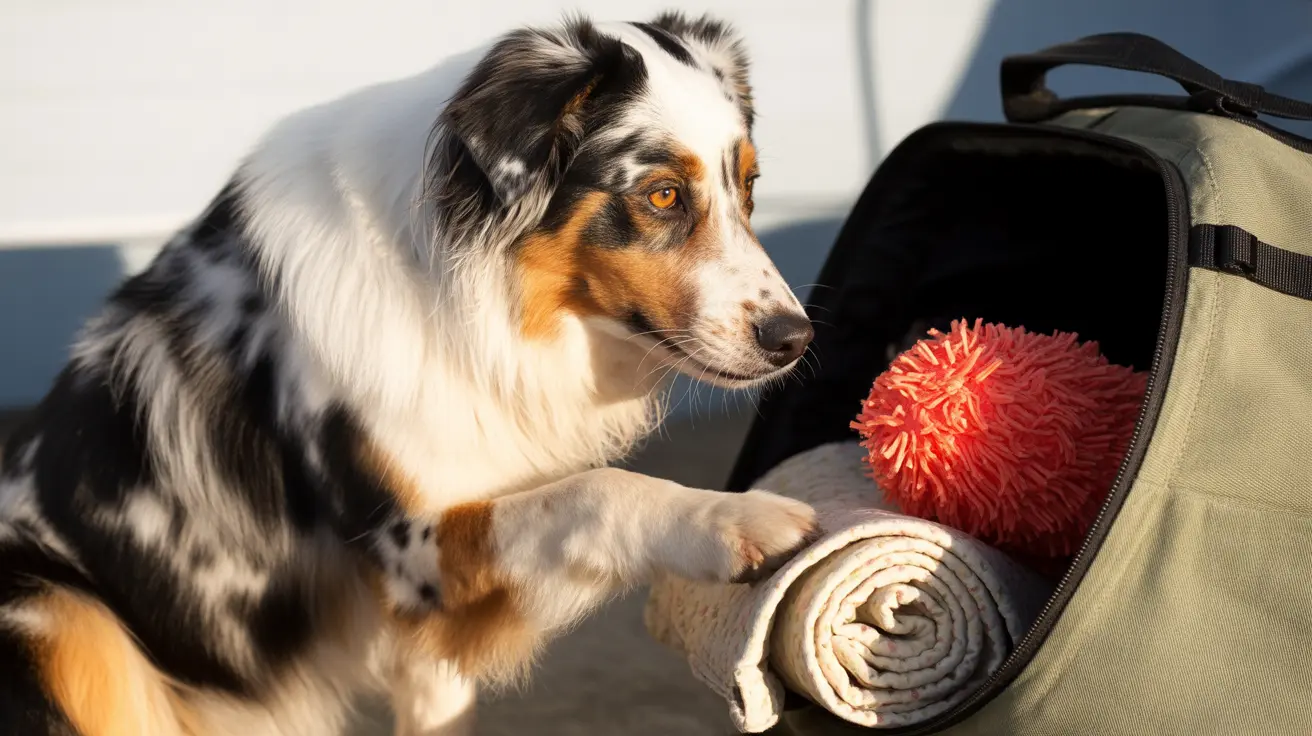How to Get Rid of Flea Eggs on Dogs: A Complete Guide
Fleas are more than a nuisance—they're persistent, fast-multiplying pests that can make life miserable for both dogs and their owners. While adult fleas bite and cause itching, it's the flea eggs that fuel ongoing infestations. Getting rid of these tiny, hard-to-see eggs requires a multi-pronged approach targeting both your dog and the spaces they frequent.
Understanding Flea Eggs and Their Life Cycle
Adult fleas lay eggs on your dog's skin, but these eggs don't stay put. They're tiny—about the size of grains of salt—and white or off-white in color. Most quickly fall off into your dog's bedding, carpets, or wherever your pup spends time. Under optimal conditions (warmth and humidity), flea eggs hatch in as little as two days, beginning a cycle that can last weeks or even months if left unchecked.
The flea life cycle includes:
- Egg: Laid on the host but soon falls into the environment.
- Larva: Feeds on organic debris in dark places like carpet fibers or cracks in flooring.
- Pupa: Spins a cocoon; can remain dormant for months until triggered by warmth or vibrations.
- Adult: Emerges to seek out a host (your dog).
Recognizing Flea Infestation Signs
You might notice your dog scratching more than usual, especially around the neck, tail base, or hind legs. Other signs include small red bumps, hair loss from excessive grooming, visible black specks (flea dirt), or even rice-like grains near the anus (a sign of tapeworms transmitted by fleas).
If you find debris on your dog's skin or bedding, try this test: Place it on a white paper towel and add water. Flea dirt turns reddish-brown (it's digested blood), while flea eggs stay white.
The Multi-Step Approach to Eliminating Flea Eggs
Tackling flea eggs means addressing both the dog and their environment. Here's how:
- Treat Your Dog:
- Use veterinarian-recommended flea preventives—these come as oral medications, topical treatments, or collars. Many products contain both adulticides (kill adult fleas) and insect growth regulators (IGRs) that stop larvae from maturing.
- Bathe your dog with a mild or medicated flea shampoo to kill adult fleas. Remember: shampoos alone won't prevent reinfestation.
- Comb your dog's fur with a fine-toothed flea comb—focus on the neck, tail base, and belly. Dip the comb in soapy water after each pass to drown any captured fleas or eggs.
- Clean Your Home Environment:
- Launder all pet bedding, blankets, and toys in hot water (over 60°C/95°F) and dry on high heat.
- Vacuum carpets, rugs, upholstered furniture, mattresses—even floors—paying special attention to corners and cracks where eggs hide. Dispose of vacuum bags immediately outside your home.
- If possible, steam-clean carpets and upholstery for extra effectiveness against all life stages.
- Mop hard floors with soap; clean under furniture regularly.
- Repeat cleaning frequently—daily if needed—for several weeks since complete eradication can take up to three months due to dormant pupae.
- Treat rooms with sprays containing IGRs for lasting protection; always follow safety instructions around pets and children.
- Treat Outdoor Areas:
- Mow lawns regularly; keep bushes trimmed where pets rest outside.
- Deter wildlife like raccoons or rodents from entering your yard—they might carry fleas too.
- If necessary for severe infestations, use outdoor sprays with IGRs in shaded pet-frequented spots.
Natural & Alternative Methods
You might hear about home remedies like diatomaceous earth (food grade), which dehydrates fleas when sprinkled onto carpets—but be careful not to let pets inhale it. Essential oils such as cedarwood or neem are sometimes used but must be applied cautiously due to potential toxicity for animals. Soapy water traps placed beneath nightlights can catch some adult fleas overnight. While substances like vinegar or coconut oil may repel fleas temporarily, they don't kill them; finely ground salt can help dehydrate fleas in carpets but may irritate pets' skin.
Prevention: Keeping Flea Eggs Away Long-Term
The battle doesn't end once you've cleared an infestation. Continue monthly vet-approved preventives for all pets year-round—even one missed dose can restart the cycle! Regularly wash bedding and vacuum living spaces to keep new infestations at bay. Persistence is key: flea eggs and pupae can lie dormant for months before hatching when conditions improve.
Troubleshooting & FAQs
- Bathe vs Preventive? Shampoos kill adults but don't protect long-term; always use ongoing preventive treatments recommended by your vet.
- Persistent Infestations? If you've cleaned thoroughly but still see fleas after several weeks, consult a veterinarian or professional pest control service—they'll help identify overlooked sources.
- Cats in the Home? Some dog flea products are toxic to cats; always check labels before treating multiple species under one roof!
Main Takeaways
- You must treat both your pet and their environment—otherwise infestations return quickly.
- Diligent cleaning is essential: vacuuming removes eggs/larvae/pupae from hidden spaces where they develop unnoticed.
- Persistent prevention keeps future outbreaks at bay—don't skip monthly doses!





